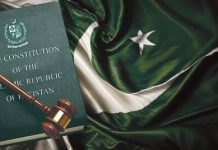A fresh round of blistering rhetoric between New Delhi and Islamabad has raised alarm among diplomats and analysts, reviving fears that a sustained exchange of threats could slip into a wider—and dangerously unpredictable—military confrontation.
On October 3–4, senior Indian military and political leaders issued some of their sternest public warnings in months, with Indian Army Chief General Upendra Dwivedi bluntly telling troops that Pakistan must stop what he called support for “state-sponsored terrorism” if it wished to “retain its place on the world map.” He added that India would not exercise the same restraint it had in earlier operations, language that many interpreted as a veiled threat of large-scale action.
The statement drew an immediate and fiery response from Islamabad. Pakistan’s defence minister, Khawaja Muhammad Asif, publicly castigated the Indian leadership’s rhetoric as an attempt to restore credibility after setbacks in earlier clashes, and vowed that any fresh Indian adventurism would be met with an even stronger response. In a post on X (formerly Twitter) and comments to domestic media, Asif said India would be “buried under the wreckage of its planes” if it tried to strike again, framing his retort as both a morale message for Pakistani audiences and a direct rebuttal to talk of erasing Pakistan from the map.
The exchange comes against the ugly backdrop of air combat and mutual accusations earlier this year. Both sides have publicly disputed losses, but the episode in May—when each side claimed battlefield successes—remains a raw point of contention. Indian statements in August claimed its air defences had shot down several Pakistani aircraft during that confrontation; Pakistani sources and independent observers dispute some of those figures, but the incident hardened narratives on both sides and set the political context for the current rhetoric. Reuters+1
Rhetoric between nuclear-armed neighbours is more than posturing. It shapes public opinion, constrains diplomats, and can drive military commanders to adopt riskier postures. Analysts point to three immediate reasons why recent comments are especially worrying:
1. Domestic political dynamics. Indian leaders, some commentators argue, are facing pressure to project strength at home following perceived setbacks; similarly, Pakistani leaders feel compelled to respond robustly to protect national credibility. Khawaja Asif explicitly linked New Delhi’s tone to domestic political calculations. Geo News
2. Operational memories from May. The visceral memory of the clashes earlier this year—not least the contested claims over aircraft losses—creates a volatile psychological baseline. Both militaries now have recent operational experience facing one another, which lowers the threshold for miscalculation.
Regional and global players have already been drawn into the diplomatic fallout. China, Pakistan’s closest strategic partner, publicly urged restraint while emphasizing its interest in regional stability; Beijing has reiterated support for Pakistan’s sovereignty in recent diplomatic exchanges. Meanwhile, the United States has sought to play a calming role—President Donald Trump publicly said he hoped the fighting would stop and indicated readiness to help mediate, reflecting Washington’s broader interest in avoiding a major South Asian war. How outside powers position themselves will influence calculations in New Delhi and Islamabad.
Several commentators and former diplomats have stressed that military threats between nuclear-armed rivals are inherently destabilizing. Even limited cross-border strikes risk rapid escalation through misinterpretation, accidents, or pre-planned contingency responses. Both countries have historically relied on red lines, back-channel communications, and international mediation to prevent limited crises from becoming all-out wars. Those mechanisms will be tested if the current rhetorical spiral continues.
At this stage, much will depend on the interplay of domestic politics, military signaling, and international pressure. Islamabad’s strong public posture aims to deter further Indian action and reassure its own population; New Delhi’s warnings are designed to punish what it deems unacceptable cross-border activity and to shore up domestic perceptions of resolve. Diplomatic actors—particularly Beijing, Washington and other regional stakeholders—are likely to intensify quiet diplomacy to prevent miscalculation.
Responsible reporting and commentary must separate verified facts from inflammatory claims. While incendiary language—such as talk of “erasing” a country from the map—dominates headlines and social media feeds, policymakers and the public need sober analysis of capabilities, escalation risks, and the limited utility of threats. Mutual restraint, restored channels of military communication and independent verification of contested incidents would reduce the danger that words turn into irreversible action.
For now, the world watches nervously as both sides trade warnings. The international community’s immediate priorities will be to prevent further violence, protect civilian lives near flashpoints, and revive dialogue channels that can cool tempers before rhetoric turns to irreparable deeds. The costs of miscalculation, as recent history shows, would be catastrophic for the region—and for global security.

















